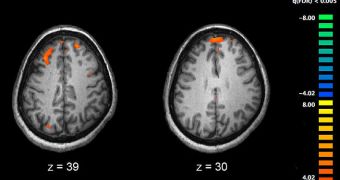According to the conclusions of a new study conducted by experts at the Hospital General Universitario Gregorio Marañón, in Madrid, Spain, it would appear that changes in gray matter volumes may be related to the onset of schizophrenia, especially in teens.
The investigators found that teenagers who received a diagnostic of schizophrenia, or some related psychiatric condition, tended to display smaller amounts of gray matter in their brains than their peers who did not receive such a diagnostic.
In addition, those who were found to suffer from schizophrenia tended to exhibit increased amounts of cerebrospinal fluid in the frontal lobe of the brain, something that was not found in healthy individuals.
The new findings are very important for understanding childhood-onset schizophrenia, a special form of the disease that starts off a bit differently from the mature-onset type. Progressive loss of gray matter has been considered a symptom of the former for quite some time now.
“It is uncertain whether these changes are shared by pediatric patients with different psychoses,” says the research team, which was led by expert Celso Arango, MD, PhD. The main purpose of the research was to look at how first-episode, early-onset psychosis affected the brains of teens.
The study lasted for 2 years, as the team was also interested in determining whether prognosis and actual diagnostics matched in time. A total of 61 teens were a part of the study. Twenty-five had schizophrenia, 16 bipolar disorder and 20 were diagnosed with other psychoses, PsychCentral reports.
Details of the work appear in the January 2012 issue of the esteemed medical journal Archives of General Psychiatry. All teens in the study had their gray matter concentrations analyzed using functional Magnetic Resonance Imaging (fMRI).
Data collected from the 61 patients were then cross-referenced with similar readings collected from 70 healthy control subjects. Each test participant underwent two brain scans, one at the beginning of the investigation, and another one 2 years later.
“In conclusion, we found progression of gray matter volume loss after a two-year follow-up in patients who ended up with a diagnosis of schizophrenia but not bipolar disease compared with healthy controls,” the team explains in the paper.
“Some of these pathophysiologic processes seem to be markers of poorer prognosis. To develop therapeutic strategies to counteract these pathologic progressive brain changes, future studies should focus on their neurobiological underpinnings,” the researchers conclude.

 14 DAY TRIAL //
14 DAY TRIAL //